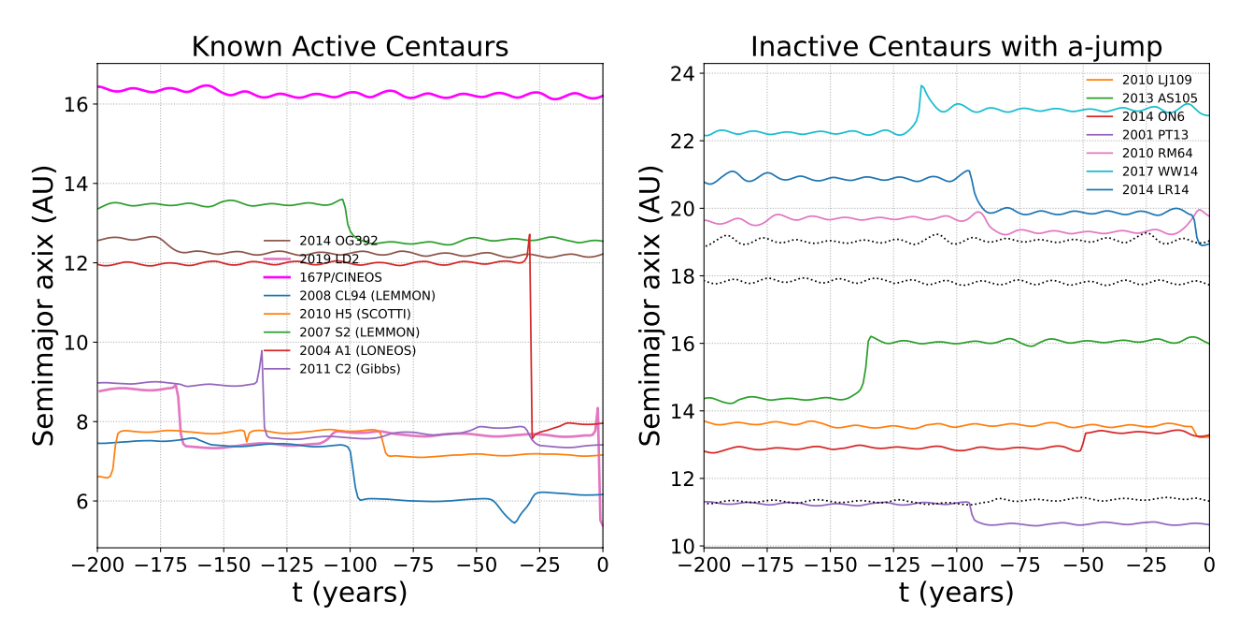- 1Planetary Science Institute, USA
- 2Comenius University, Slovakia
- 3University of Central Florida, USA
Centaurs are small bodies orbiting between Jupiter and Neptune that were scattered inwards from their sources in the trans-Neptunian region, and which will eventually feed the JFC population. A small fraction of Centaurs display comet-like activity, of which the drivers and triggers are not well understood. The range of heliocentric distances where the active Centaurs have been observed, and their median lifetime in the region, suggest this activity is neither driven by water-ice sublimation, nor entirely by super-volatiles. Here we present a dynamical study of 55 active Centaurs and high-perihelion JFCs and compare their dynamical behaviors to those of more than 260 known inactive objects in the region. Our results show there is a common feature present in the orbital evolution of active bodies - a sudden rapid decrease in semi-major axis aligned with decrease in eccentricity, which typically occurred less than several hundred years in the past. This 'a-dip', is in most cases not correlated with a substantial change in perihelion distance, and with a few exceptions it is not present in the orbital history known inactive Centaurs. Our thermodynamical modeling suggests the sudden decrease in semi-major axis could act as a trigger for the cometary activity on Centaurs due to the rapid change of thermal environment. Moreover, the lag between the a-jump and some recently observed active Centaurs could be used to constraint the volatiles and processes driving the cometary activity beyond the orbit of Jupiter. We have identified fourteen Centaur candidates with no observed prior periods of activity for possible future outbursts based on their recent a-dips, which are similar in magnitude to those observed in other active Centaurs and distant JFCs. These objects should be targets of high interest for observational activity monitoring.
 Figure 1: Comparison of the a-dips observed in orbital history of several known active Centaurs (left) compared to (right) a-dips of the identified inactive Centaurs – possible candidates for future outbursts. The dotted lines on the right panel show typical fluctuation of semi-major axis in the vast majority of inactive Centaurs.
Figure 1: Comparison of the a-dips observed in orbital history of several known active Centaurs (left) compared to (right) a-dips of the identified inactive Centaurs – possible candidates for future outbursts. The dotted lines on the right panel show typical fluctuation of semi-major axis in the vast majority of inactive Centaurs.
How to cite: Lilly, E., Jevčák, P., and Schambeau, C.: The Semi-major Axis Dips as the Activity Triggers in Centaurs and Distant Jupiter Family Comets, Europlanet Science Congress 2022, Granada, Spain, 18–23 Sep 2022, EPSC2022-1265, https://doi.org/10.5194/epsc2022-1265, 2022.

